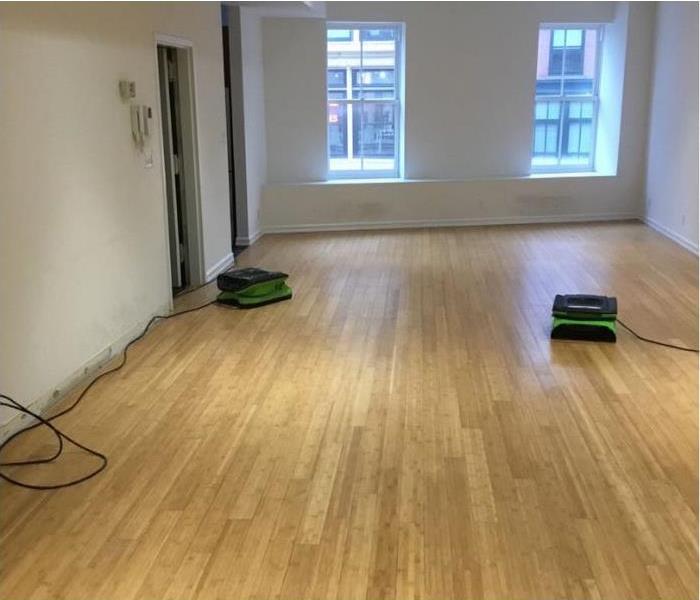Cleaning Up Brooklyn Water Damage Efficiently
3/22/2023 (Permalink)
SERVPRO Water Cleanup for Carpet and Drywall
Water-related disasters can strike anywhere and anytime in a home. While there are ways to anticipate and minimize damage, a sudden plumbing mishap or appliance failure is all it takes to saturate walls, ceilings, and floors within minutes of exposure. Professional mitigation can help Brooklyn homeowners save time and money while dealing with the stresses caused by water damage.
Our water damage restoration crew in Brooklyn is ready to mitigate damage to structures and belongings 24/7, even during weekends and holidays. Cleanup plans and estimates are tailored to meet clients' needs while adhering to the Institute of Inspection, Cleaning and Restoration Certification's (IICRC) standards for the restoration industry.
How and Why Moisture Affects Carpeting and Drywall
Carpet, pad, and sheetrock are among the most commonly-affected surfaces that water mitigation technicians handle. While it may not seem like they have much in common at first glance, they share some fundamental properties that enable water damage to spread:
- Though carpet might be made of synthetic fibers or walls covered in water-resistant paint, the base materials are porous and prone to moisture buildup.
- Because carpet is made of fibers and drywall is essentially a gypsum and cardboard sandwich, water damage can easily wick up surfaces and spread.
- Much like carpet cannot remain attached to the pad underneath after too much moisture exposure, wallpapers, adhesives, and paints can start bubbling, peeling, and detaching from drywall.
- Moisture can affect subfloors beneath carpet and studs or joists behind drywall after moisture damage has had time to proliferate on a property. This exposure can create the potential for mold.
Wet carpet and drywall are, fortunately, often salvageable. Moisture is easier to get out of synthetic than organic fibers. However, mold can still grow if the water damage is not addressed within 24-48 hours after exposure starts. Drywall, meanwhile, can often be dried without total demolition, though some portions may require cutting away for drying or safety. If possible, it is much more cost-effective to replace small amounts of sheetrock than to demolish and rebuild an entire wall or ceiling.
SERVPRO Water Mitigation Can Save Wet Walls and Floors
SERVPRO IICRC-certified technicians are trained to handle water damage scenarios and often have to treat wet walls and floors in homes. Whether the disaster is small or large in scale, SERVPRO can do the following for homeowners dealing with moisture damage:
- Inspect the affected property with calibrated moisture sensors, meters, thermal imaging cameras, and thermohygrometers before, during, and after mitigation.
- Perform demolition tasks necessary for water cleanup, whether they be small cutouts in ceilings to force air into cavities or drilling weep holes into walls to dry the cavities without demolishing excess drywall that is otherwise salvageable.
- Extractor wands designed for carpets can remove moisture and deploy EPA-registered solutions that eliminate bacterial growth exacerbated by moisture exposure. Several passes with an extractor can also accelerate drying.
- Position air movers and dehumidifiers near walls and use specialized tubes to push air into ceiling cavities. For carpet, affected portions can be tented up for onsite drying with air movement and dehumidification equipment or moved offsite for more thorough cleaning. After restoration, which can include subfloor water cleanup, SERVPRO crew members can reinstall and re-seam carpeting and pad.
When homeowners want quality results, they can call SERVPRO of Mill Basin, Flatlands at (718) 381-3271 for restoration that looks and feels "Like it never even happened."






 24/7 Emergency Service
24/7 Emergency Service